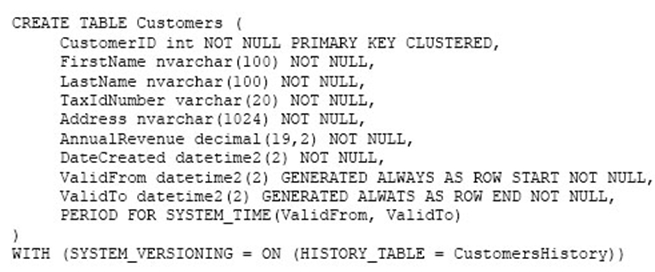

Note: This question is part of a series of questions that use the same or similar answer choices. An answer choice may be correct for more than one question in the series. Each question is independent of the other questions in this series. Information and details provided in a question apply only to that question.
You create a table by running the following Transact-SQL statement:
You need to return normalized data for all customers that were added in the year 2014.
Which Transact-SQL statement should you run?
A.
B.
C.
D.
E.
F.
G.
H.
Backy
Highly Voted 4 years, 9 months agoVermonster
Most Recent 4 years, 5 months agoapplepie
4 years, 6 months agoAndy7622
4 years, 6 months agoHoglet
4 years, 6 months agoJorax
4 years, 8 months agoeduardogtc
4 years, 9 months agoKiruu23
4 years, 10 months agoimsun93
4 years, 10 months agoIlray
5 years, 1 month agovermeilyn
5 years, 1 month agovermeilyn
5 years, 1 month agoexam_taker5
5 years, 11 months agoexam_taker5
5 years, 11 months agoAshleyLiang
5 years, 10 months agoM4x
5 years, 9 months agoTazul
5 years, 9 months agoAK80
4 years, 11 months ago